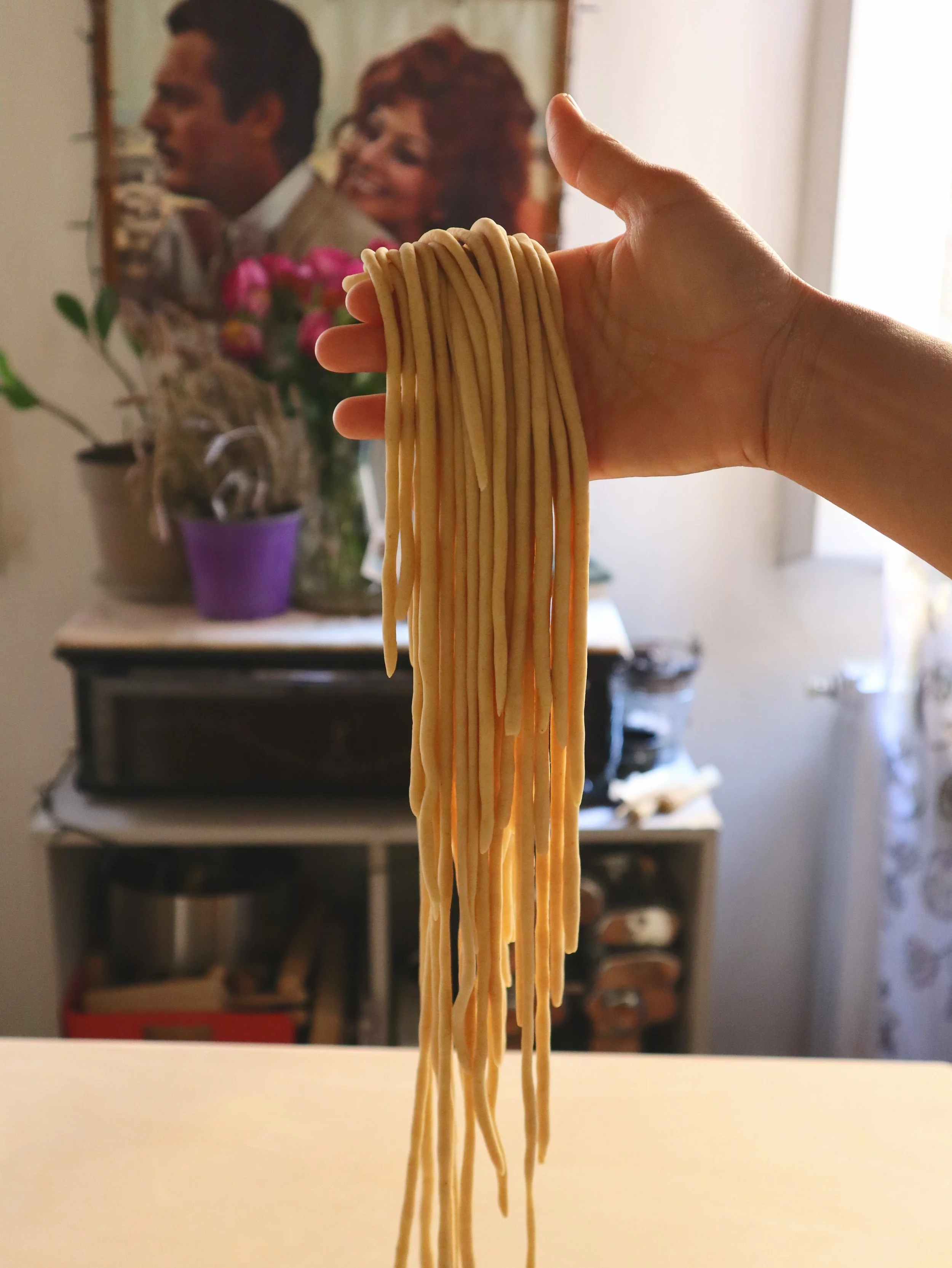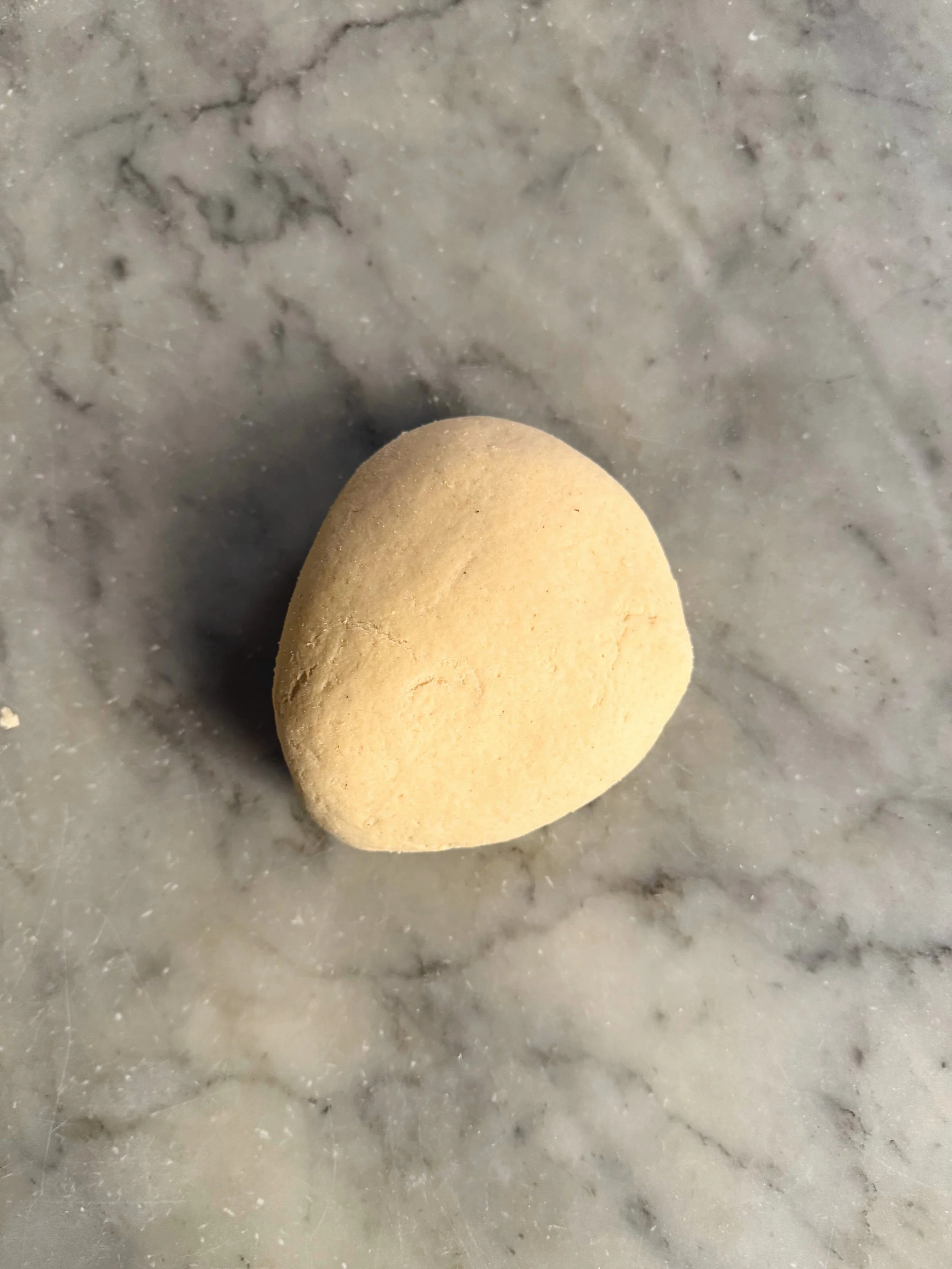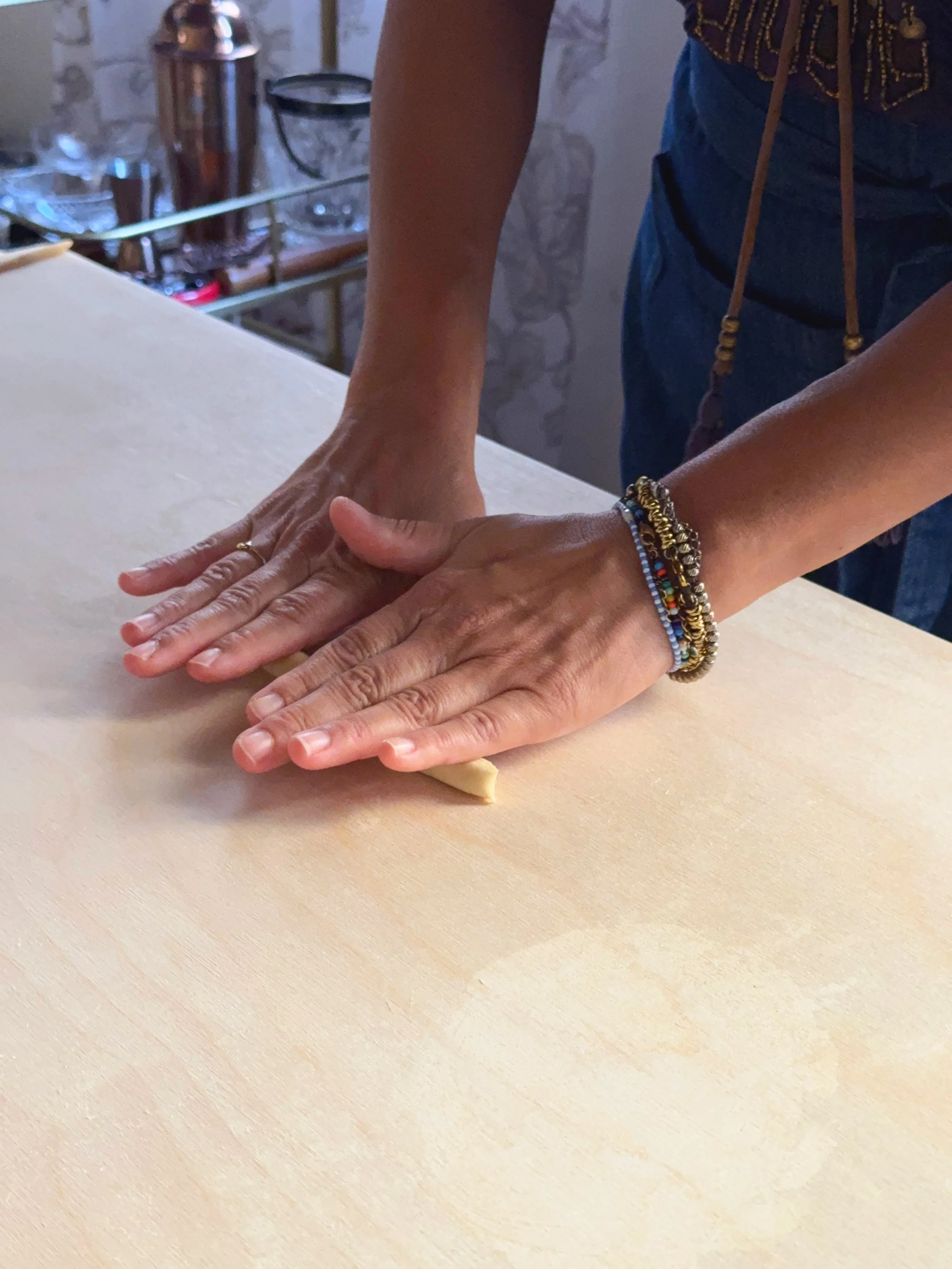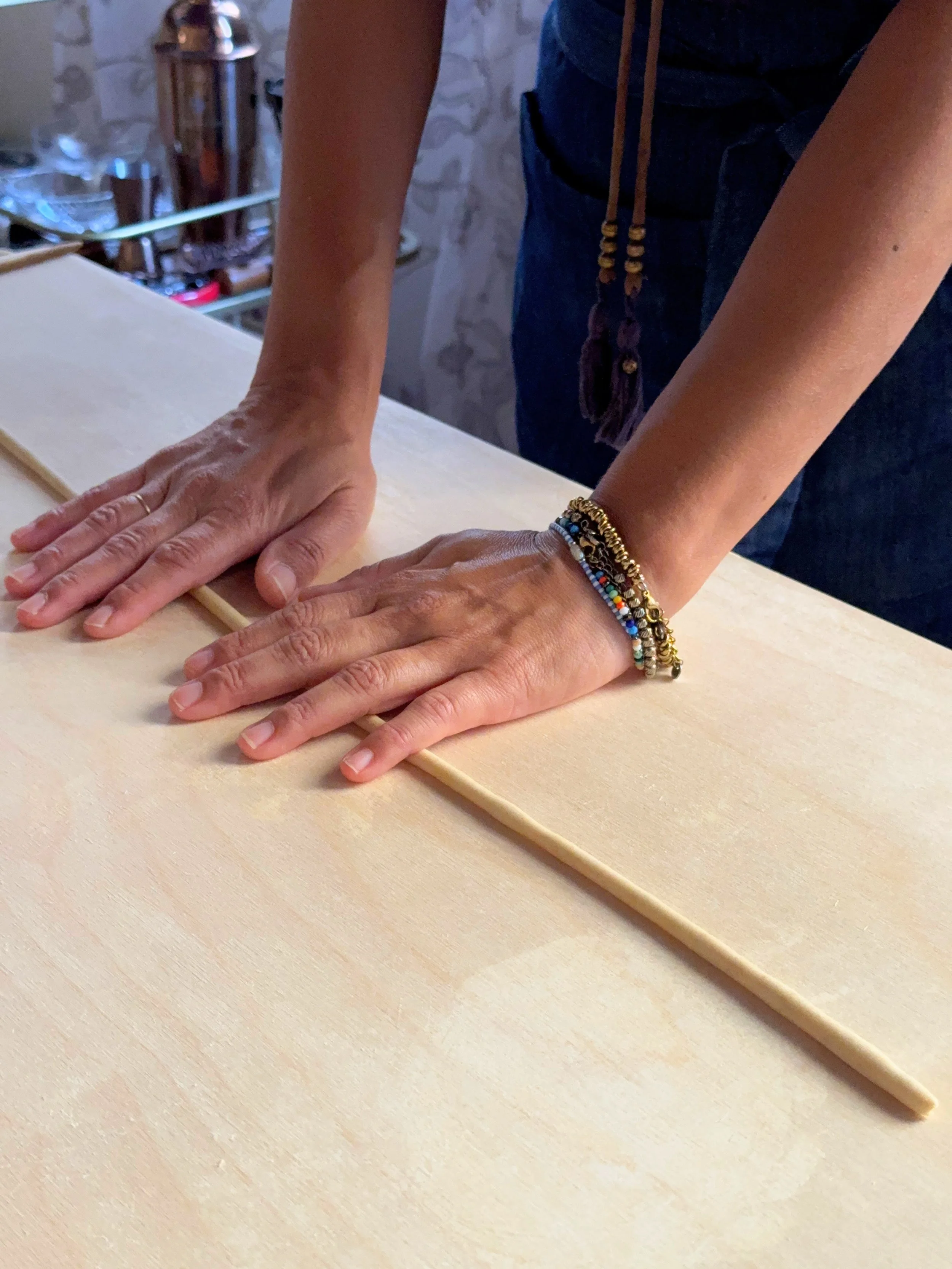How to Make Pici
Pici
Pici is a classic Tuscan pasta that is a thick hand-rolled noodle….no pasta making equipment needed, and very simple to make. It’s one of the doughs that is typically made with just flour and water. There are different recipes calling for different types of flours: semola, 00 or 1. 00 flour is a soft wheat flour that is finely ground with a softer texture, 1 is also a soft wheat flour, but slightly coarser. Semola is firmer, made from durum wheat and gives the pasta more of a bite which I quite like. Choose which flour makes sense for you or blend the flours but the important part is the 2:1 ratio of flour:water.
These days I’ve been making pici with semola flour and 45 % hydration. Water based doughs are typically made with 2 parts flour to 1 part warm water. For one portion that would equal 100 grams flour, and 50 ml water but when I say 45% hydration that would amount to 45 ml of water for every 100 grams. I always say that pasta is by feeling, so this will be your starting point and you make adjustments as needed. If the dough is dry you add some water, if it’s sticky you work in some flour.
Semola & Water for Pici
Method:
Measure the flour for the number of portions you’re making and lay it onto your work table. Make a well in the middle and add the warm water. Using a fork and moving in a circular motion slowly incorporate the flour from the inner sides of the well with the water. Once the water has essentially appeared to have been absorbed by the dough, clean off any excess flour from the fork and work only with your hands from this point. Use your fingertips to lightly press or smush the flaky dough together. After a couple minutes it will become a more cohesive dough and you will switch to kneading. With kneading you’re really using the heel of the palm of your hand to push away and back, with a slight turn. You knead for a few minutes until you achieve a homogeneous dough which is soft, yet not sticky but very well combined. Wrap the dough in plastic wrap or you can place it on your counter with a bowl placed upside down over it. The dough shouldn’t be exposed to air so that it doesn’t dry.
Semola & Water Dough
After it’s rested for 30 minutes you can begin rolling out the dough.
First you can flatten it with the palm of your hand or a rolling pin to about ¼ cm or ⅛ inch thickness. Cut a few strips of dough about ½ a cm or ¼ in wide. Keep the remaining dough wrapped while you roll out the strips, and only cut a few strips at a time. This prevents the dough from drying out as you’re rolling out the pici. If you’re making more than a couple portions of dough, brush the outside of the waiting dough lightly with some EVOO to help prevent drying the dough out. This dough is traditionally rolled on a wooden board called an assepasta or spianatoia used for making pasta. You could sub in a wooden cutting board. Rolling pici is usually without bench flour and on wood so that it lightly grips as it rolls, using bench flour would make it slippery. This also gives the pici a nice exterior texture that clings to the sauce.
Take a strip and roll under your hands with a light pressure. Move your hands across the pici to make sure it rolls out evenly. These are typically irregular in length, about ¼ of a cm or ⅛ of an inch in diameter, and rounded on all sides.
It’s typically served with a tomato sauce made with a type of garlic called aglione that is grown in the Val di Chiana area or toasted breadcrumbs and the aglione, or the local ragu. These are classic pairings but feel free to pair it with the sauce your heart desires. I quite love it with my artichoke, pistacchio and mint pesto!







